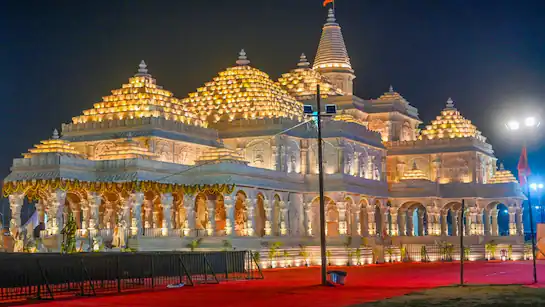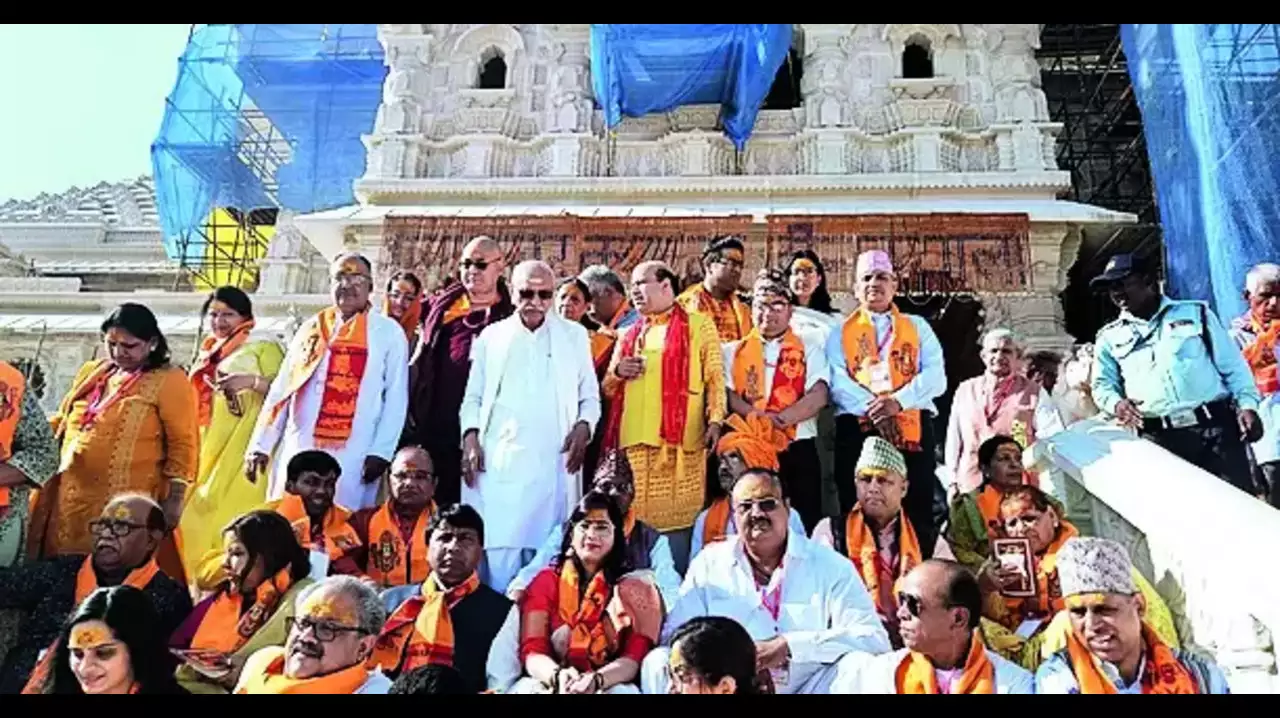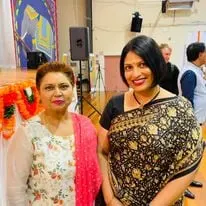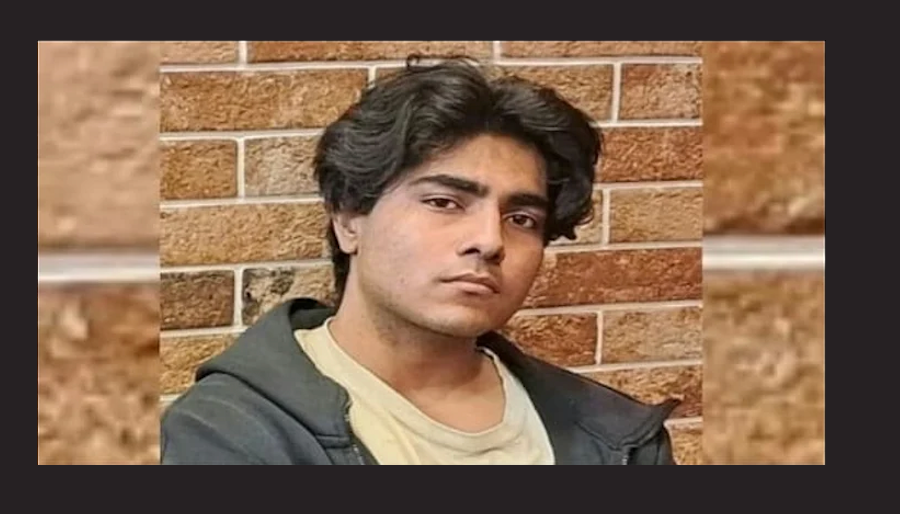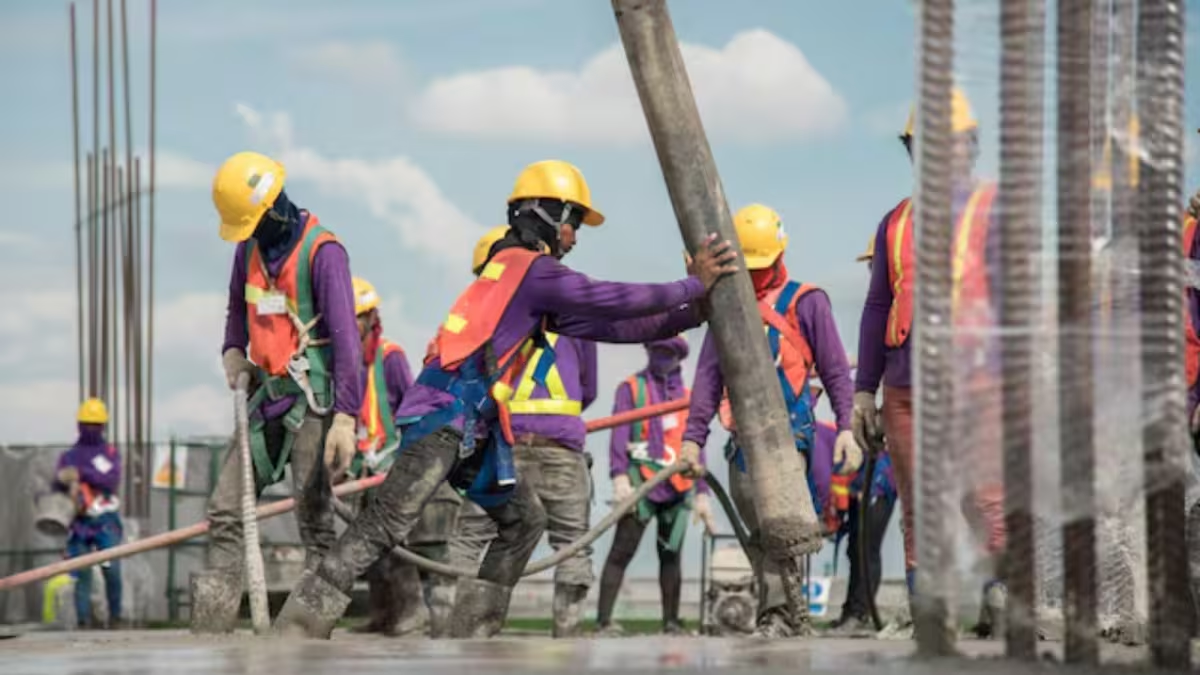Besides construction activity that is in full swing, a star-studded, virtual Ram Leela has catapulted Ayodhya to the global platform. More than 19 crore people worldwide are currently watching this great epic that is being streamed live.
Ayodhya is all bedecked and is currently hosting the Ram Leela, a star-studded gala. This time it is Bollywood actor Bhagyashree who is playing Sita Maiya, while actors Shakti Kapoor, Arbaaz Khan, Raza Muraad, Asrani, Avatar Gill, Bindu Dara Singh are also part of it. In total, around 35 film stars are portraying the various characters in the Ramlila, which began at Lakshman Qila in Ayodhya, for a virtual telecast.
Very proud and happy to be part of this grand celebration, Bhagyashree was seen wearing a red lehenga and heavy jewellery along with flower garlands. More than 19 crore people worldwide are currently watching this great epic that is being streamed live at different locations through LED screens and TV since October 6, to end with Dussehra on Oct 15. This is as per the government vision to open new tourism opportunities in Ayodhya.
Have long wished to visit Ayodhya, just about three hours or so away from Lucknow, depending on traffic. History is in the making here, the Ram temple construction has reached a crucial stage. Phase 1 of the construction is almost complete and was showcased by the Ram Janmabhoomi Trust for the first time recently.
Remember visiting the city good ten years back, when the roads needed a lot of attention, but things as they stood now, had definitely undergone a change. The fly-overs ensured we skipped going into Faizabad city altogether and then with a left turn; the virtual map guided us into the city.
Barely inside and trying to locate the road to Hanuman Garhi, our first stop, guides started approaching us, vying with each other with rates and ease of travel. We parked our car and got into an e-rickshaw of a guide who drove us to the site. Somehow development seemed to have eluded the Ayodhya vasis, as was visible all along the route in the condition of the houses and dwellings. Branded showrooms and small shops selling mobiles and certain other gadgets rubbed shoulders with cycle repair shops and tea stalls and a huge number of those selling pan.
The Saryu river with the many ghats came into view reminding me of the beautiful sight on television when they had been lighted up with earthen lamps last Deepawali, considered the time when Lord Ram was born. Many could be seen bathing in the Saryu waters for some respite from the sweltering heat. Soon we found ourselves walking up the Hanuman Garhi steps after buying the customary besan or gram flour laddoos for offering. Large murals and paintings of Lord Hanuman and Ram made for a colourful sight. The crowd was heavy but each one of us came back with garlands, given by the priest.
As we emerged and decided to head for lunch, the markets we found mostly had shops selling figurines of stone and marble of different Gods and Godesses of varying size, besides temple replicas, trinkets, dupattas, gamchhas and also plastic toys of all kinds.
The Hanumanji ‘gada’ or club was another object seen prominently in the toy shops. Tea shops, thhelas selling tea, samosas and multiple eateries catering to all kinds of customers, dotted the city. While most had names that could be associated with Ayodhya, Kanak Rasoi was the one we went to. The food came in copper big sized plates or thaals with small copper bowls with a delicious ‘satvik’ or strictly vegetarian fare. But what really made it all so tasty was the freshly cooked ‘chulhe ki roti’. That was quite a treat indeed.
Around 4 lakh cubic feet of stone and marble from Rajasthan will be used for the structure that will stand 161 feet over the sanctum sanctorum — there will be no use of steel or bricks.
And then, we headed for the site, where the construction is all set to be completed before the 2024 polls. The approx. 1.5 km parikrama saw us getting thoroughly checked at security points, police, some even in battle fatigue sitting in groups. The temple replica and remnants of ancient temple that had been dug out, kept us engrossed and then the vast construction site came into view. The construction began on August 5 last year. Around 4 lakh cubic feet of stone and marble from Rajasthan will be used for the structure that will stand 161 feet over the sanctum sanctorum — there will be no use of steel or bricks. The 47 layers of concrete have been filled after excavation to support the three-storied structure that will come up over 10 acres of land within the temple complex. Each of the 47 layers is one foot in height. The plinth will be 60 feet high. The activity is indeed intense and concentrated here with multiple machines, engineers and workers at work.
The well-protected place where the deity has been installed temporarily came into view and we were tempted to stop in our tracks as the realization that this is the place that today is in absolute global focus was simply overpowering. Walking further and guarding against the monkeys waiting to snatch the Prasad from us, the rest of the route was lined with shops selling mementoes and knick-knacks that normally devotees buy. Bought a memento for myself and a couple of more for people back home.
Adjacent to the Ram Janmabhoomi premises in Ayodhya, the Ram Janmabhoomi Teerth Kshetra has purchased 7,285 square feet of land to expand the complex area to 107 acres, for which it still has to acquire 14,30,195 square feet of land. The main structure will be constructed on five acres of land while various facilities, including a museum and a library, will come up on the remaining land. The 360 ftX235 ft structure will have 160 columns on the ground floor, 132 columns on the first floor and 74 columns on the second floor. There will be five “mandaps” or pavilions. Heritage structures like “Kuber Tila” and “Sita Koop” will be conserved.
Driving off, we promised ourselves to visit again after a couple of months. After all, history is in the making here, and why miss when we are so close by.
************************************************************************
Readers
These are extraordinary times. All of us have to rely on high-impact, trustworthy journalism. And this is especially true of the Indian Diaspora. Members of the Indian community overseas cannot be fed with inaccurate news.
Pravasi Samwad is a venture that has no shareholders. It is the result of an impassioned initiative of a handful of Indian journalists spread around the world. We have taken the small step forward with the pledge to provide news with accuracy, free from political and commercial influence. Our aim is to keep you, our readers, informed about developments at ‘home’ and across the world that affect you.
Please help us to keep our journalism independent and free.
In these difficult times, to run a news website requires finances. While every contribution, big or small, will makes a difference, we request our readers to put us in touch with advertisers worldwide. It will be a great help.
For more information: pravasisamwad00@gmail.com


